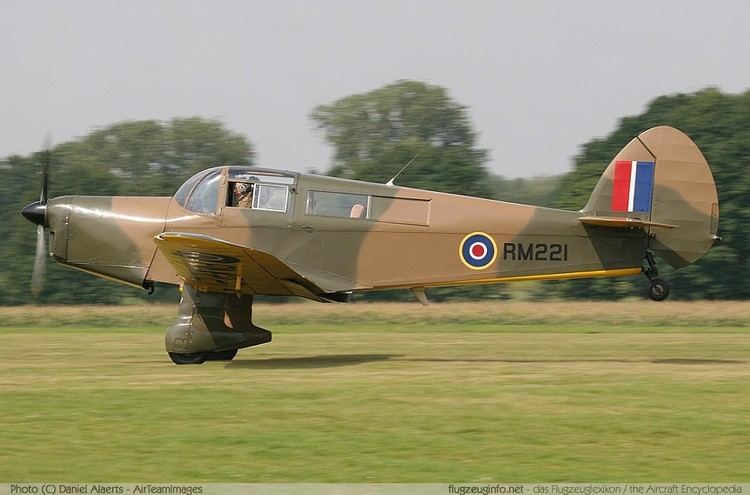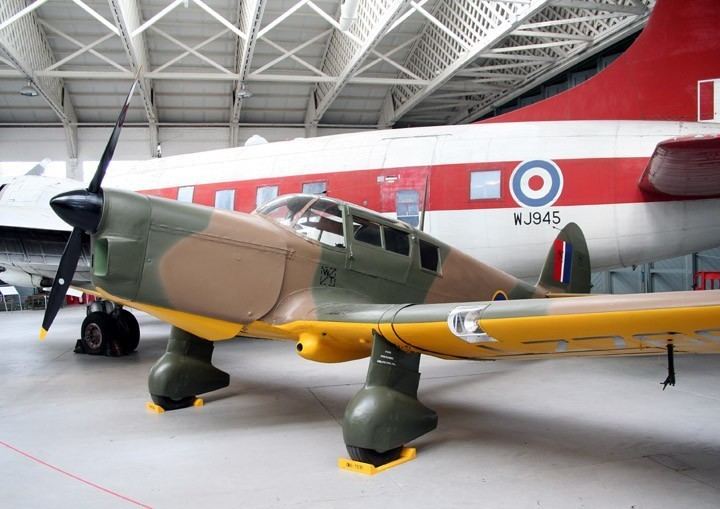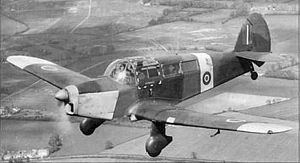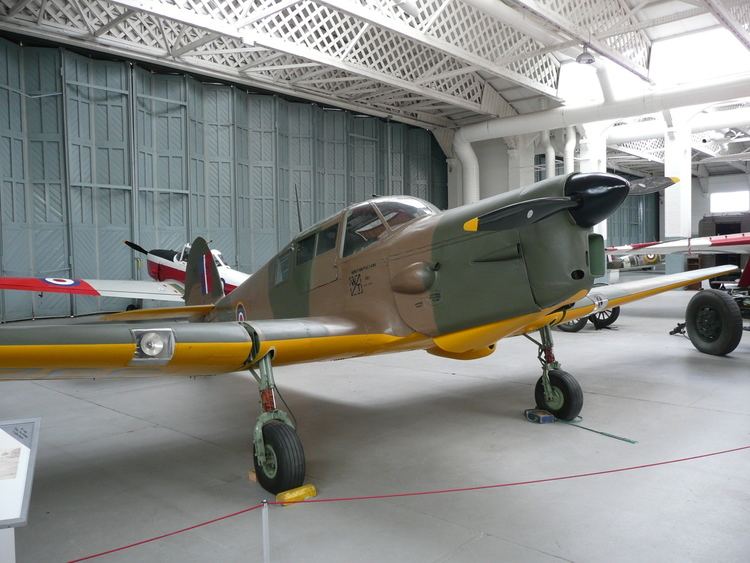Top speed 257 km/h Length 8.59 m First flight October 8, 1939 | Wingspan 12 m Retired 1955 Manufacturer Hunting Aircraft | |
 | ||
Percival proctor v with jean batten reenactment
The Percival Proctor was a British radio trainer and communications aircraft of the Second World War. The Proctor was a single-engined, low-wing monoplane with seating for three or four, depending on the model.
Contents
- Percival proctor v with jean batten reenactment
- Frog 1 72 percival proctor iv and airspeed oxford
- Design and development
- Operational history
- Variants
- Civil
- Military
- Notable Owners
- Flying
- Under restoration
- On display
- Specifications Proctor IV
- Notable appearances in media
- References

Frog 1 72 percival proctor iv and airspeed oxford
Design and development

The Proctor was developed from the Percival Vega Gull in response to Air Ministry Specification 20/38 for a radio trainer and communications aircraft. To meet the requirement, the aircraft based on the Vega Gull had larger rear cabin windows and the fuselage was six inches longer. Modifications were made to the seats to enable the crew to wear parachutes, and other changes to enable a military radio and other equipment to be fitted. In early 1939 an order was placed for 247 aircraft to meet operational requirement OR.65.

The prototype aircraft, serial number P5998, first flew on 8 October 1939 from Luton Airport. and the type was put into production for the RAF and Fleet Air Arm. The prototype was tested as an emergency bomber during 1940 but this idea was abandoned as the invasion threat receded. Although the first 222 aircraft were built by Percival at Luton, most of the remaining aircraft were built by F. Hills & Sons of Trafford Park near Manchester. They built 812 Proctors of several marks between 1941 and 1945, assembling most of the aircraft at Barton Aerodrome.

It should be noted that, whilst the very early Proctors (Mks I to III.) followed very closely the last incarnation of the superb Vega Gull, and consequently, most of its performance, later versions became much heavier and less aerodynamic, with inevitable detrimental effects upon their performance. The later marks of Proctor, whilst looking broadly similar, were in fact a complete redesign of the aircraft and were much enlarged, heavier and even less efficient. Flight performance was poor. There were later plans to fit them with the 250 hp Queen 30 and larger airscrew, but only one trial aircraft was so fitted as the all-metal Prentice was being developed to replace the Proctor, utilising the Queen 30 etc. Interestingly, the Prentice itself proved to be a very poor aircraft (Even worse than the late Proctors.) and served in the RAF for only a handful of years before withdrawal as it was deemed unsatisfactory. The remaining Proctors in use soldiered-on after Service use in private hands until the 1960s. At this point, owing to concerns about the degradation of glued joints in their wooden airframes, they were all grounded. Several surviving Proctors have been rebuilt with modern adhesives and should be returned to the air shortly. Early Proctors still make good light aircraft, as they combine the Vegas attributes of Long-range, speed and load-carrying ability. Notably, all Proctors inherited the Vega Gulls feature of wing-folding.
Operational history

The Proctor was initially employed as a three-seat communications aircraft (Proctor I). This was followed by the Proctor II and Proctor III three-seat radio trainers.

In 1941, the Air Ministry issued Specification T.9/41 for a four-seat radio trainer. The P.31 – originally known as the "Preceptor" but finally redesignated the Proctor IV – was developed for this requirement with an enlarged fuselage. One Proctor IV was fitted with a 250 hp (157 kW) Gipsy Queen engine. This was used as a personal transport by AVM Sir Ralph Sorley but production models retained the 210 hp (157 kW) motor of earlier marks.
At the end of the war, many early mark Proctors were sold on the civilian market and were operated in Australia, New Zealand and Europe. The Mk IV continued in service with the RAF until the last was withdrawn in 1955.
In 1945, a civil model derived from the Proctor IV was put into production for private owner, business and light charter use as the Proctor 5. The RAF purchased four to be used by air attachés.
The final model of the line was the solitary Proctor 6 floatplane sold to the Hudson's Bay Company in 1946.
Three highly modified Percival Proctors, nicknamed the "Proctukas," were produced for the film Battle of Britain as stand-ins for the Ju-87 Stuka. After test flights revealed instability, they were ultimately abandoned and never appeared in the film.
Variants
Civil
Civil Proctors have been registered in the following countries; Argentina, Australia, Austria, Belgium, Brazil, Canada, Chile, Denmark, Egypt, Finland, France, Germany, Gold Coast, Iceland, India, Ireland, Italy, Kenya, Lebanon, Morocco, New Zealand, Portugal, Rhodesia, South Africa, Southern Rhodesia, Spain, Sweden, Switzerland, Transjordan, Turkey, United Kingdom and United States.
Military
Notable Owners
Flying
Proctor Mk III G-ALJF and Proctor Mk IV G-ANXR (RAF number RM221) are both airworthy and based at Biggin Hill.
G-ANXR now relocated to Headcorn after 35 years at Biggin Hill.
G-ALJF was unfortunately damaged in a landing accident at a private strip in Kent July 2012 and is awaiting repairs.
Proctor 5, "G-AKIU" is airworthy (2015), owned by Air Atlantique and operated as part of the Classic Air Force, based at Coventry. For sale on Controller.com (as of 16 Nov. 2016)
Proctor Mk I ZK-DPP, configured as a Vega Gull, and Proctor Mk Vs ZK-AQZ & ZK-ARP are airworthy and flying in New Zealand.
Under restoration
Proctor III LZ766, built by Hills is displayed at the Imperial War Museum, Duxford. Proctor IV NP294 at the Lincolnshire Aviation Heritage Centre, East Kirkby. Proctor IV G-AHTE at Clacton and Classic Air Force. Proctor IV G-AKIU are all under restoration to flying condition.
Proctor Mk III G-AOGE has been at Biggin Hill for at least 20 years. The airframe has been completely restored over this time with much new wood and modern glue, but it has lain in the corner of one of the hangars for the last five – six years, awaiting financing to restore its engine.
Proctor IV NP184 (ex G-ANYP), displayed from 1972-1988 at the Torbay Aircraft Museum in Devon, England, and previously used for training purposes at Brooklands Technical College at Weybridge, Surrey, England, in the late 1960s/early 1970s is believed to survive in Australia with a private owner who acquired it in 1995.
On display
Proctor III Z7197 is on display at RAF Museum, Hendon. Another Mark III is on show at the RAAFAWA Museum, Bullcreek, near Perth, Western Australia. Another Proctor is on display in the lobby of the Australian National Museum, Canberra.
Specifications (Proctor IV)
Data from The Hamlyn Concise Guide to British Aircraft of World War II
General characteristics
Performance
Armament
none
Notable appearances in media
The Proctor was mentioned in the song "Flying Doctor" by Hawklords (1978)
It was Biggles' main aircraft in the Air Police stories by W.E. Johns
Two Proctors were modified with angular gull wings to resemble Junkers Ju 87 Stukas for the 1969 film Battle of Britain, and were dubbed Proctukas.
